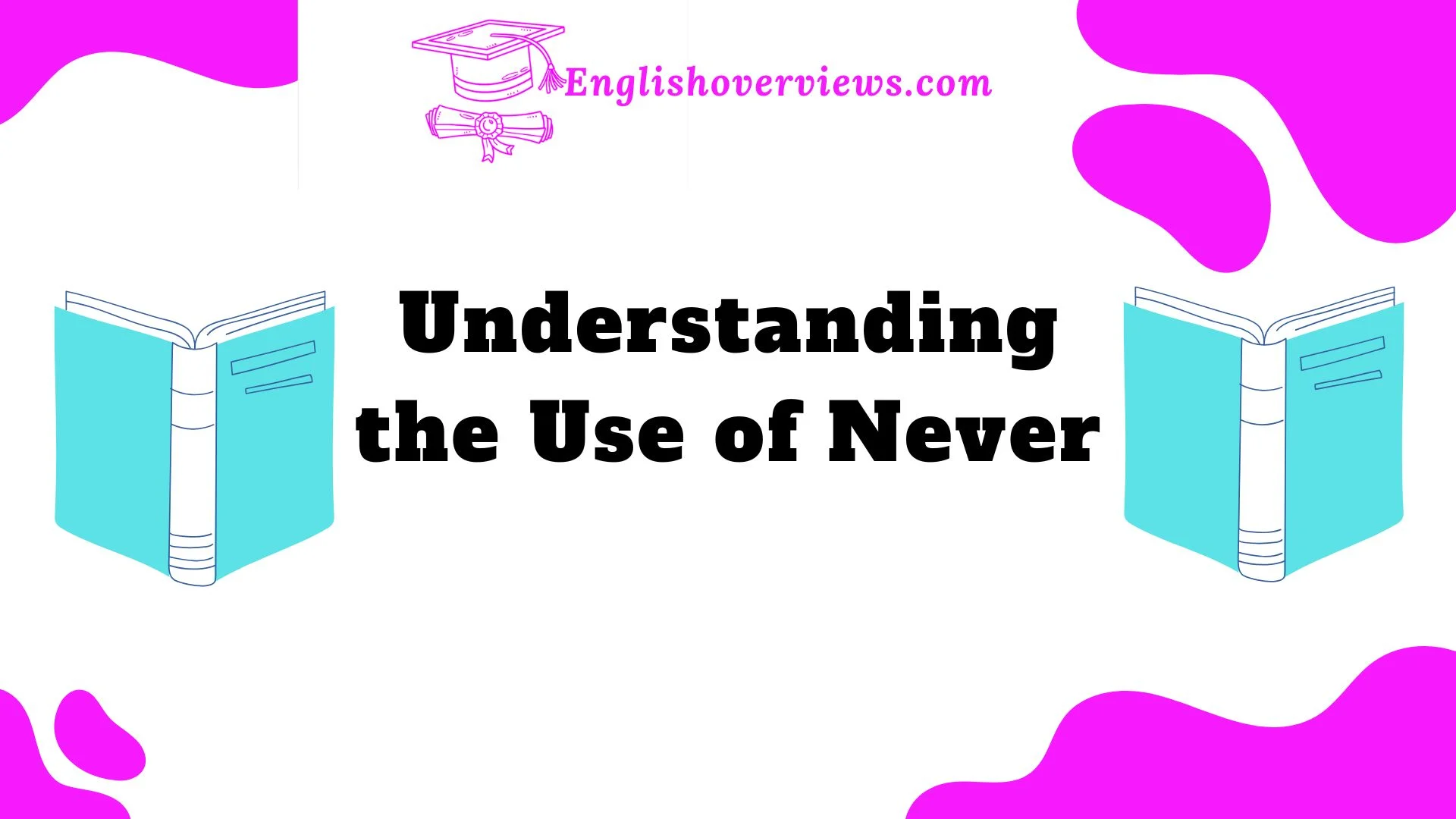Negative constructions in English often confuse even advanced learners. Among these, the pairing of “never” and “nor” holds a special place for its ability to add precision and nuance. But how does this combination function? When should you use it? If you’re looking to improve your English grammar or sharpen your writing, understanding the role of “never + nor” is essential.
In this blog post, we’ll dive into the intricacies of “never + nor”, explore its correct usage, and share real-world examples. Whether you’re writing formally or casually, mastering this construction can make your sentences more polished and impactful.
Introduction to Negative Constructions in English
Negative constructions allow us to express the absence of actions, states, or truths. Words like “no,” “not,” “never,” and “nor” are vital in creating these expressions. While some negative forms are straightforward, combining “never” and “nor” adds depth to a sentence.
For example:
- “I never visit the park, nor do I attend the library.”
This sentence conveys two negatives seamlessly.
Why is mastering negative constructions important?
- It improves sentence clarity.
- It avoids grammatical errors in formal writing.
- It allows for a better understanding of context.
The Basics of ‘Never + Nor’: Meaning and Function
What does “never” mean?
“Never” means “at no time” or “not ever.” It is absolute, leaving no room for exceptions.
Example:
- “I never eat fast food.”
What does “nor” mean?
“Nor” is a coordinating conjunction that pairs with negative expressions. It’s often used after “neither” or “not.”
Example:
- “She didn’t go to the party, nor did she call me.”
How do “never” and “nor” work together?
When combined, “never” introduces a negative, and “nor” connects another negative clause or idea.
Example:
- “He never apologized, nor did he explain his actions.”
The Coordinating Function of ‘Nor’ in Negative Grammar
The role of “nor” as a coordinating conjunction:
“Nor” links two clauses or ideas while maintaining parallel structure.
Example:
- “I never liked the movie, nor did I enjoy the book.”
Why is parallel structure important?
- It ensures readability.
- It maintains grammatical balance.
A quick comparison:
| Correct Sentence | Incorrect Sentence |
| “I never swim, nor do I hike.” | “I never swim, nor I hike.” |
Notice how the correct sentence uses “do I” to maintain balance.
Nor’ Versus Other Coordinating Conjunctions
How does ‘nor’ compare to other conjunctions like ‘or’ and ‘but’?
| Conjunction | Purpose | Example |
| “Nor” | Connects negatives. | “She never called, nor did she text.” |
| “Or” | Offers choices. | “You can choose tea or coffee.” |
| “But” | Shows contrast. | “I wanted to go, but I couldn’t.” |
The Correlative Role of ‘Neither… Nor…’
What is “neither… nor”?
This correlative conjunction links two negative ideas.
Example:
- “Neither the manager nor the assistant was available.”
How does it differ from “never + nor”?
While “never + nor” connects clauses, “neither… nor” connects subjects or objects.
| Expression | Usage | Example |
| “Never + Nor” | Links negative clauses. | “He never listens, nor does he care.” |
| “Neither… Nor” | Links subjects or objects. | “Neither John nor Sarah attended.” |
Correct Usage of Never + Nor in Formal and Informal Writing
Rules for using “never + nor”:
- Ensure both ideas are negative.
- Use proper parallel structure.
- Avoid redundancy.
Example in Formal Writing:
- “I never agreed to the terms, nor did I sign the contract.”
Example in Informal Writing:
- “He never shows up on time, nor does he call ahead.”
Contextual Examples: Real-World Application of Never + Nor
Here are some practical examples:
- Literary Example:
- “He never asked for help, nor did he complain.” (Jane Austen)
- Professional Setting:
- “The client never provided feedback, nor did they approve the designs.”
- Daily Conversation:
- “I never go to that café, nor do I recommend it.”
Nuances of Extending a Negative State with Never + Nor
Extending negatives helps add emphasis or express continuity:
Example:
- “He never apologized for his mistake, nor did he offer any explanation, leaving everyone frustrated.”
Tip: Use “never + nor” to emphasize persistence or repetition in behavior.
Common Mistakes and Misconceptions
Mistakes to Avoid:
- Using “nor” without a preceding negative:
- Incorrect: “I like neither apples nor bananas.”
- Correct: “I like neither apples nor bananas.”
- Mixing “nor” with “or”:
- Incorrect: “I never sing or dance.”
- Correct: “I never sing, nor do I dance.”
Alternative Constructions for Expressing Negatives
Sometimes, alternatives work better for clarity:
| Expression | Example |
| “Let alone” | “I never read books, let alone write.” |
| “Far from” | “He is far from friendly.” |
Using ‘Neither + Nor’ for Emphasis in Writing
Why use “neither + nor”?
It adds drama and focus to your sentences.
Example:
- “Neither the noise nor the chaos could disturb her focus.”
Enhancing Writing with Variations and Synonyms
How to avoid monotony:
- Alternate with phrases like “not even close” or “without.”
- Mix in idiomatic expressions for flavor.
Mastering Negative Constructions for Precision and Style
Why precision matters:
- It ensures clarity.
- It avoids misinterpretation.
Conclusion: Mastering Nuance in English Grammar
Understanding “never + nor” is a small but impactful way to enhance your writing. Practice using it to make your sentences more precise, clear, and impactful.
FAQs
1. Can I use “nor” without “never”?
Yes, but it requires another negative like “neither” or “not.”
2. Is “nor” outdated?
No, “nor” is still widely used, especially in formal contexts.
3. What’s the difference between “never + nor” and “neither + nor”?
“Never + nor” links clauses, while “neither + nor” connects subjects or objects.
4. Can I replace “nor” with “or”?
No, “nor” specifically pairs with negatives, while “or” offers choices.
5. Is “never + nor” common in spoken English?
It’s more common in formal writing but can be used in conversational contexts for emphasis.

English Overviews is a resourceful website dedicated to providing valuable content related to grammar and vocabulary. AD has made notable contributions, sharing insights on various subjects, including WordPress themes and plugins. The primary goal of the site is to help users improve their English language skills effectively.











